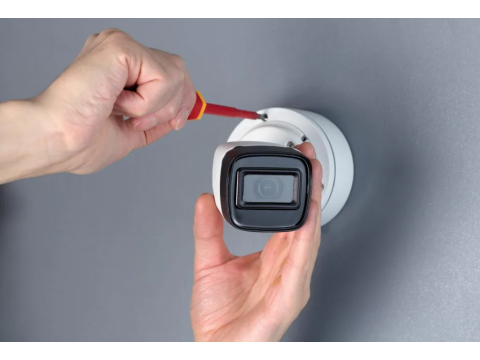Practical Tips for Choosing and Installing Video Surveillance
Installing a video surveillance system can seem overwhelming for beginners, but following structured advice can simplify the process. Here’s a comprehensive guide to help you make informed decisions about selecting and installing the right surveillance system for your property.
Key Considerations Before Installing Surveillance
Define Objectives
- Clearly outline what you want to achieve, such as theft prevention, activity monitoring, or evidence collection.
- Identifying goals helps avoid overspending on unnecessary features.
Choose the Right Type of System
- IP Surveillance: Ideal for large properties requiring advanced video analytics and remote monitoring.
- Analog Systems: Best for homes or small businesses needing straightforward, cost-effective solutions.
Assess Connectivity Options
- Wireless Systems: Convenient for remote or hard-to-wire locations but may be susceptible to interference.
- Wired Systems: More reliable for consistent data transmission over long periods. Options include:
- Twisted Pair (Ethernet): Common for IP cameras.
- Coaxial Cable: Widely used in analog setups.
- Fiber Optics: For high-volume data transmission across significant distances (recommended for enterprise solutions).
Steps for Selecting Surveillance Equipment
Cameras
- Resolution: Choose at least 2MP for clear visuals; higher resolutions like 4K are ideal for critical zones.
- Field of View: Ensure cameras cover entry points, high-traffic areas, and blind spots.
- Night Vision: Infrared (IR) capabilities are essential for 24/7 monitoring.
Video Recorder
- DVR (Digital Video Recorder): For analog systems.
- NVR (Network Video Recorder): Required for IP cameras, offering advanced features like motion detection.
Storage
- Decide between local storage (HDD) and cloud solutions, considering the retention period and security requirements.
Tips for Installing Video Surveillance
Plan Camera Placement
- Position cameras at key areas such as entrances, exits, parking lots, and valuables storage.
- Use overlapping coverage to minimize blind spots.
Optimize Cabling
- Conceal wires where possible to prevent tampering.
- Consider ceiling voids or existing conduits for clean and secure wiring.
Test Camera Angles
- Adjust cameras to eliminate glare and ensure they are not obstructed by objects like trees or fixtures.
Set Up Power Backup
- Install uninterruptible power supplies (UPS) to ensure functionality during outages.
Configure Settings
- Fine-tune motion detection, video quality, and notification preferences.
- Enable secure access with strong passwords and encryption protocols.
Modern Technologies to Explore
AHD Surveillance
- Combines simplicity of analog systems with high-definition output comparable to IP systems.
- Offers longer-distance transmission over coaxial cables.
Remote Access and Cloud Integration
- Enables monitoring from smartphones or PCs, providing flexibility and real-time updates.
Conclusion
Choosing and installing a video surveillance system doesn’t have to be daunting. Start by defining your goals, exploring equipment options, and following structured installation practices. Whether it’s for a home, office, or larger property, a well-thought-out approach will ensure maximum security and efficiency.

